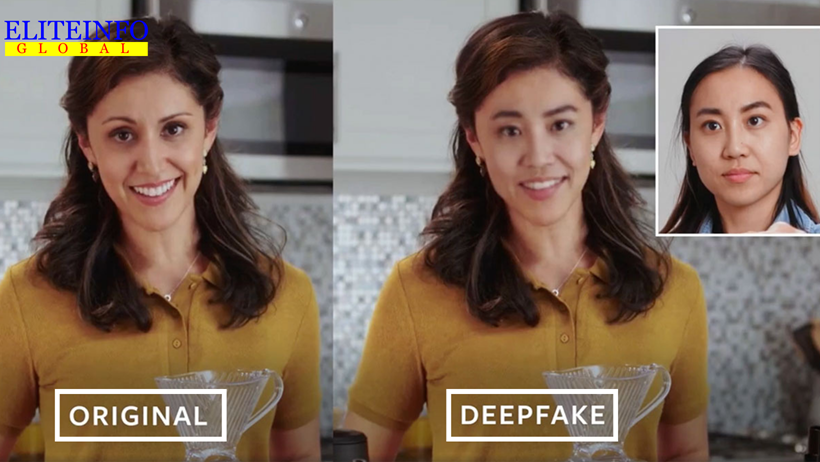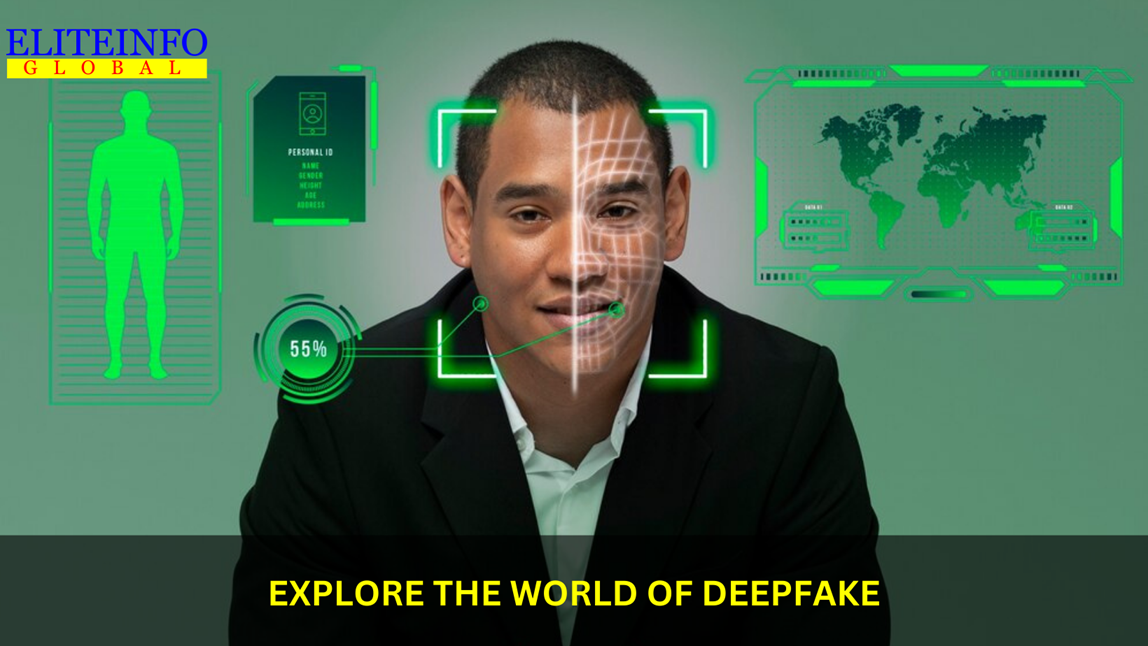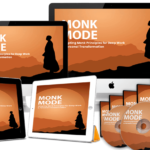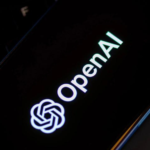What is Deepfake AI
Deepfake AI is a type of artificial intelligence which is used to create exactly realistic images, audio, and video of a real person. Deepfakes often transform existing source content or create entirely original content where someone is represented doing or saying something they have not. This technology can be used for acceptance of recognized principles or accepted rules and standards such as movies or entertainment, video game audio, and customer support.
The process of making a deepfake involves feeding countless hours of actual video footage to a deep neural network, which is then trained to recognize detailed rhythms and traits of a person. This technology can be used to create incredibly convincing impersonations that hackers can take advantage.
The dangers posed by deepfakes include spreading misinformation and confusion about important issues, creating revenge porn and other unethical actions, and potential use in elections and election propaganda. While deepfake technology has legitimate uses, it is essential to be aware of its potential dangers and the possibility of misuse. Governments, universities, and tech firms are funding research to develop better detection methods and regulations to address the challenges posed by deepfakes.
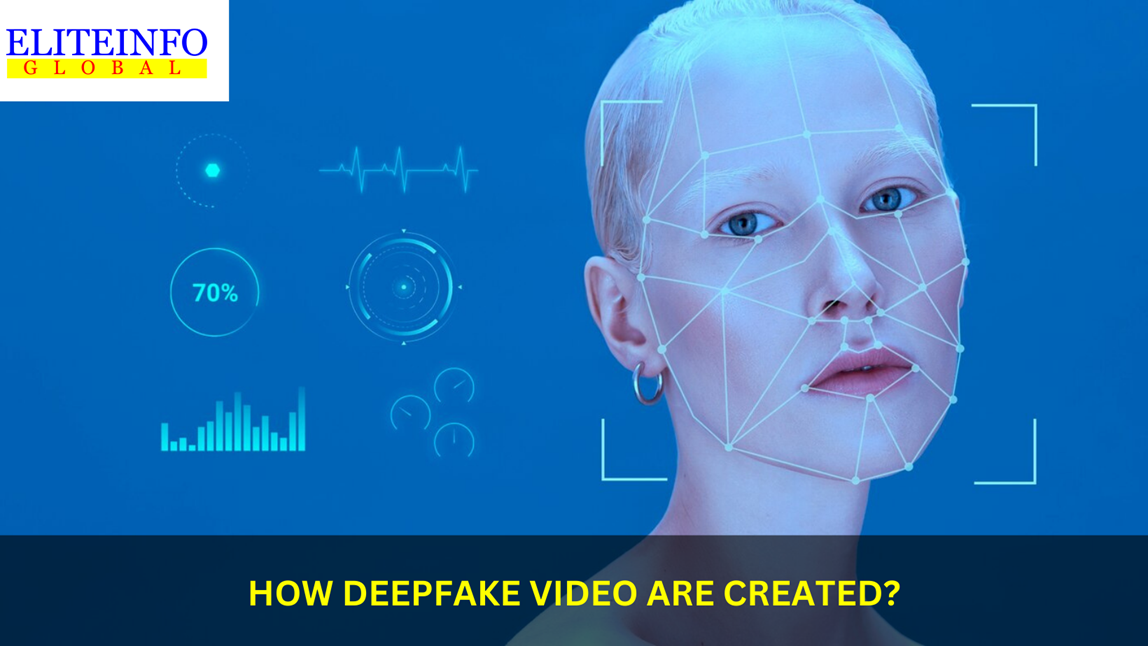
How deepfakes are created?
Deepfakes are created using machine learning algorithms, specifically deep learning. The process typically involves a five-step process, including data collection, data preparation, model training, model conversion, and the creation of the deepfake. To create a effective deepfake, a gaming-type GPU and significant graphics-editing and audio-dubbing skills are needed. The software for creating deepfakes is free and open source, it requires expertise and a duration of several weeks to months to create the content.
The technology for creating deepfakes is constantly increasing, and there are concerns about the potential misuse of this technology, such as in nonconsensual pornography, fake alibis, extortion, or terrorism. Efforts are underway to improve the detection of deepfake technology and develop tools to defeat its misuse.
How deepfake AI works?
Deepfake AI uses machine learning and deep learning techniques to create synthetic media, such as images and videos, that can deceive viewers and listeners. The process involves several steps and techniques to create the convincing deepfakes:
- Data Collection: Deepfake algorithms require large amounts of data, such as images, videos, or audio recordings, to learn and generate realistic synthetic media
- Data Preprocessing: The collected data is pre-processed, which may involve resizing, cropping, or normalizing the input to ensure consistency and improve the training process
- Model Training: Deepfake algorithms are trained using deep learning models, such as autoencoders, generative adversarial networks (GANs), or recurrent neural networks (RNNs). These models are designed to learn complex patterns and representations from the pre-processed data.
- Media Generation: Once the model is trained, it can generate new synthetic media by combining the learned patterns and representations with new input data. This results in deepfake images, videos, or audio recordings which can be difficult to distinguish from genuine content
- Post-Processing: The generated deepfake media may require additional processing, such as applying makeup, adding background effects, or adjusting audio to make the final result more convincing and engaging
Deepfake AI has various applications, including entertainment, marketing and customer support, but it also poses significant risks, such as spreading false information and undermining trust in digital content.

What are some industries that are using deepfake technology?
Some of the industries that are using deepfake technology are:
- Entertainment: Deepfake technology can be used to create realistic visual effects in movies, making it easier to generate convincing scenes and characters.
- Advertising: Deepfake technology can be employed to create more realistic and engaging advertisements, allowing businesses to showcase their products and services in a more persuasive manner.
- Gaming: Deepfake AI can be used to generate realistic animations and character interactions in video games, enhancing the gaming experience for players.
- Customer support: Deepfake technology can be used to create virtual customer support agents that resemble real people, providing assistance and information to users in a more personalized and relatable manner.
- Data analytics and data governance: This technology can be used to generate synthetic data, which can help businesses to analyse trends and patterns without compromising privacy or security concerns.
- Simulations: Deepfake technology can be used to create realistic simulations for various industries, such as aviation, military, and healthcare, helping professionals prepare for real-life scenarios and improve their decision-making.
- Accessibility: Deepfake technology can be used to create subtitles or translations, making the content more accessible to people who are deaf or have language barriers.
What are some examples of deepfakes?
One example of deepfakes include a video that appears to show soccer star David Beckham fluently speaking nine different languages, when he actually speaks only one.
A fake video showing Richard Nixon giving a speech he prepared in the event that the Apollo 11 mission failed and the astronauts didn’t survive.
In November 2024, one deepfake video of an Indian actress Rashmika Mandanna was going viral in which she was smiling, talking and saying something.

Additionally, there are deepfake examples such as a video of Nicki Minaj and Tom Holland, a fake video of Morgan Freeman, and a deepfake of Jim Carrey starring in “The Shining”.
These examples demonstrate the potential of deepfake technology to create convincing but false content.

How can deepfakes be used for positive purposes?
Deepfake AI, while often associated with negative implications, can also be used for positive purposes. Some idea about potential benefits are:
- Enhanced Visual Effects: Deepfake technology can be used to create more realistic visual effects in movies, television shows, and other forms of media, leading to a more immersive and engaging viewing experience for audiences.
- Educational Applications: Deepfakes could be used in education to create realistic simulations for training purposes, such as showing historical speeches or scientific discoveries with lifelike accuracy, enhancing the learning experience.
- Healthcare Industry: Healthcare sector can use this AI to create virtual representation of different diseases, its treatment and precautions for creating awareness among the general public.
- Improved Accessibility: Deepfake technology could be used to create subtitles or translations, making media more accessible to people who are hearing impaired or who speak different languages.
- Enhanced Simulations: Deepfakes can be utilized to create realistic simulations for various fields such as aviation, military, and healthcare, helping professionals prepare for real-life scenarios and improve their decision-making.
- Historical and Artistic Preservation: Deepfakes can bring history and art “alive” for a wider audience, potentially sparking interest in art and history.
While these positive applications are promising, it’s important to address the potential risks and ethical considerations associated with the use of deepfake technology.
What are the limitations of deepfake technology?
The limitations of deepfake technology include:
- Deepfake technology can be used to spread false information, manipulate socio-political views, and damage reputations, leading to serious consequences such as undermining public trust, sowing political discord, and inciting violence
- Deepfakes can be used to create fake videos or audio recordings, potentially violating individuals’ privacy
- The use of deepfake technology raises ethical concerns related to consent, authenticity, and the potential for misuse in various domains, including politics, entertainment, and marketing
- Deepfakes are difficult to detect. So, the arms race between detection methods and creation techniques poses a significant challenge in combating the spread of synthetic media
- The use of deepfakes can lead to a ‘Lack of trust’ for digital world, as they are used to create fake videos, which undermines the authenticity of digital content and can decrease trust in media and online interactions
These limitations highlight the potential risks and negative implications associated with the widespread use of deepfake technology. It is important to address these concerns and develop strategies to mitigate the adverse effects of this technology.
What are some ways to prevent the spread of deepfakes?
To prevent the spread of deepfakes, several measures can be taken, including:
- Implementing New Security Standards: Businesses can implement new security standards and use anti-fake technology to identify and guard against deepfake attacks.
- Training and Awareness: Educating employees, management, and stakeholders about the dangers of deepfakes can help build an additional layer of defence against these attacks.
- Media Literacy and Good Quality Sources: Encouraging individuals to become media literate and use good quality news sources can help in spotting and preventing the spread of deepfakes.
- Multistep Authentication and Approval Systems: Developing a multistep authentication process that includes verbal and internal approval systems can help to prevent the unauthorized spread of deepfake contents.
- Digital Watermarking and Image Verification: Using digital watermarking and image verification techniques can help detect and prevent the spread of deepfake content
By adopting these measures, businesses and individuals can work towards preventing the spread of deepfakes and mitigating their potential negative impact.
What are some legal implications of creating and spreading deepfakes?
The creation and spread of deepfakes can have significant legal implications as mentioned below:
- Nonconsensual Pornography: Deepfakes can be used to create pornographic videos or images that superimpose a person’s face onto another’s body, which can be particularly damaging to the individual whose face has been used, as well as to their reputation and privacy. This practice can be illegal and may result in criminal charges.
- Intellectual Property Rights: Deepfakes can infringe on intellectual property rights, such as copyright, trademark, and publicity rights. The inventor of deepfakes may own the copyright interest in the synthetic media, but the victim of deepfakes does not own a copyright interest in their own image
- Defamation and Privacy: Deepfakes can be used to create fake videos or audio clips that harm an individual’s reputation or violate their privacy rights. Victims of deepfake defamation could pursue legal action for reputational damage, and privacy rights could also be violated if manipulated content is used to intrude into private lives.
- Manipulation and Misinformation: Deepfakes can be used to spread misinformation during elections, potentially undermining the democratic process. Legal measures are needed to control the misuse of these technologies to manipulate political outcomes
- Criminal Offences: Deepfakes can be used for impersonation and fraud, potentially leading to cybercrimes and financial losses. Creating and distributing explicit deepfake content without consent could result in legal consequences
To address these legal implications, new laws and regulations could be developed to specifically address the creation and distribution of deepfakes that are intended to harm or deceive individuals. Existing laws related to defamation, intellectual property, privacy, and fraud could also be updated to reflect the unique challenges posed by deepfakes.
Top 10 deepfake AI apps and websites based on the search results
Based on the search results, here are the top 10 deepfake AI apps and websites:
- DeepSwap
- Synthesia IO
- Reface
- DeepFaceLab
- Wombo
- Lensa AI
- Deepfakes Web
- MyHeritage
- Deep Art
- Face Swap Live
These apps and websites utilize artificial intelligence and machine learning to create deepfake videos and images. It’s important to use such technology responsibly and be aware of the ethical implications and potential misuse of deepfakes.
